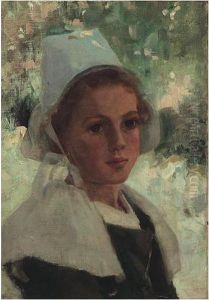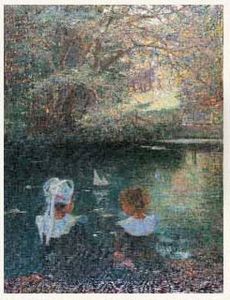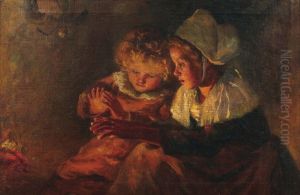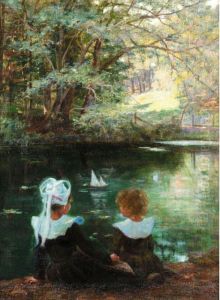Margaret Campbell Macpherson Paintings
Margaret Campbell Macpherson was a British artist born on May 29, 1860, in Barton-upon-Irwell, Lancashire, England. Although not as widely recognized as some of her contemporaries, Macpherson made significant contributions to art during her lifetime and was part of the wave of female artists who began to receive more recognition towards the end of the 19th century and into the early 20th century.
Macpherson's early life and education in the arts are not as thoroughly documented as some other artists of the time. However, it is known that she developed a keen interest in painting from a young age. She pursued her artistic training at the Slade School of Fine Art in London, which was one of the few art schools that accepted female students at the time. The Slade was known for its progressive approach, offering women the same opportunities in art education as men. This environment was pivotal for Macpherson, as it allowed her to hone her skills and develop her artistic voice.
After her education, Macpherson traveled to Italy, where she was deeply influenced by the Renaissance masters. She lived in Florence for a time, which became a central subject of many of her works. The Italian culture, landscape, and light had a profound effect on her painting style. Macpherson was known for her landscape and genre paintings, often characterized by their vibrant color palette and impressionistic style. Her work frequently portrayed the Tuscan countryside and scenes of everyday life in Italy, capturing the essence of the place and its people.
Margaret Campbell Macpherson was involved in several art societies. She became a member of the Society of Women Artists and exhibited her work there, as well as at the Royal Academy of Arts in London. Her involvement in these societies was important at a time when the art world was largely male-dominated, and they provided vital platforms for female artists to showcase their work.
Despite the challenges faced by women in the arts during her lifetime, Macpherson achieved a degree of success and recognition among her peers. She continued to paint throughout her life, contributing to the cultural landscape of her time and paving the way for future generations of female artists.
Macpherson's legacy is one of perseverance and dedication to her craft. She passed away in 1931, leaving behind a body of work that, while perhaps not as well-known as some of her contemporaries, offers valuable insight into the life and times during which she lived and the evolving role of women in the arts. Her paintings remain a testament to her skill and passion for capturing the world around her.



